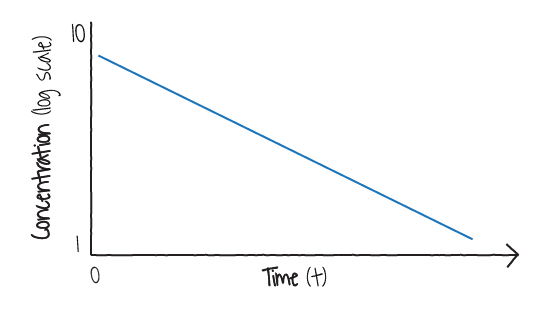11.3: Disposition Models
- Page ID
- 317865
\( \newcommand{\vecs}[1]{\overset { \scriptstyle \rightharpoonup} {\mathbf{#1}} } \)
\( \newcommand{\vecd}[1]{\overset{-\!-\!\rightharpoonup}{\vphantom{a}\smash {#1}}} \)
\( \newcommand{\id}{\mathrm{id}}\) \( \newcommand{\Span}{\mathrm{span}}\)
( \newcommand{\kernel}{\mathrm{null}\,}\) \( \newcommand{\range}{\mathrm{range}\,}\)
\( \newcommand{\RealPart}{\mathrm{Re}}\) \( \newcommand{\ImaginaryPart}{\mathrm{Im}}\)
\( \newcommand{\Argument}{\mathrm{Arg}}\) \( \newcommand{\norm}[1]{\| #1 \|}\)
\( \newcommand{\inner}[2]{\langle #1, #2 \rangle}\)
\( \newcommand{\Span}{\mathrm{span}}\)
\( \newcommand{\id}{\mathrm{id}}\)
\( \newcommand{\Span}{\mathrm{span}}\)
\( \newcommand{\kernel}{\mathrm{null}\,}\)
\( \newcommand{\range}{\mathrm{range}\,}\)
\( \newcommand{\RealPart}{\mathrm{Re}}\)
\( \newcommand{\ImaginaryPart}{\mathrm{Im}}\)
\( \newcommand{\Argument}{\mathrm{Arg}}\)
\( \newcommand{\norm}[1]{\| #1 \|}\)
\( \newcommand{\inner}[2]{\langle #1, #2 \rangle}\)
\( \newcommand{\Span}{\mathrm{span}}\) \( \newcommand{\AA}{\unicode[.8,0]{x212B}}\)
\( \newcommand{\vectorA}[1]{\vec{#1}} % arrow\)
\( \newcommand{\vectorAt}[1]{\vec{\text{#1}}} % arrow\)
\( \newcommand{\vectorB}[1]{\overset { \scriptstyle \rightharpoonup} {\mathbf{#1}} } \)
\( \newcommand{\vectorC}[1]{\textbf{#1}} \)
\( \newcommand{\vectorD}[1]{\overrightarrow{#1}} \)
\( \newcommand{\vectorDt}[1]{\overrightarrow{\text{#1}}} \)
\( \newcommand{\vectE}[1]{\overset{-\!-\!\rightharpoonup}{\vphantom{a}\smash{\mathbf {#1}}}} \)
\( \newcommand{\vecs}[1]{\overset { \scriptstyle \rightharpoonup} {\mathbf{#1}} } \)
\( \newcommand{\vecd}[1]{\overset{-\!-\!\rightharpoonup}{\vphantom{a}\smash {#1}}} \)
\(\newcommand{\avec}{\mathbf a}\) \(\newcommand{\bvec}{\mathbf b}\) \(\newcommand{\cvec}{\mathbf c}\) \(\newcommand{\dvec}{\mathbf d}\) \(\newcommand{\dtil}{\widetilde{\mathbf d}}\) \(\newcommand{\evec}{\mathbf e}\) \(\newcommand{\fvec}{\mathbf f}\) \(\newcommand{\nvec}{\mathbf n}\) \(\newcommand{\pvec}{\mathbf p}\) \(\newcommand{\qvec}{\mathbf q}\) \(\newcommand{\svec}{\mathbf s}\) \(\newcommand{\tvec}{\mathbf t}\) \(\newcommand{\uvec}{\mathbf u}\) \(\newcommand{\vvec}{\mathbf v}\) \(\newcommand{\wvec}{\mathbf w}\) \(\newcommand{\xvec}{\mathbf x}\) \(\newcommand{\yvec}{\mathbf y}\) \(\newcommand{\zvec}{\mathbf z}\) \(\newcommand{\rvec}{\mathbf r}\) \(\newcommand{\mvec}{\mathbf m}\) \(\newcommand{\zerovec}{\mathbf 0}\) \(\newcommand{\onevec}{\mathbf 1}\) \(\newcommand{\real}{\mathbb R}\) \(\newcommand{\twovec}[2]{\left[\begin{array}{r}#1 \\ #2 \end{array}\right]}\) \(\newcommand{\ctwovec}[2]{\left[\begin{array}{c}#1 \\ #2 \end{array}\right]}\) \(\newcommand{\threevec}[3]{\left[\begin{array}{r}#1 \\ #2 \\ #3 \end{array}\right]}\) \(\newcommand{\cthreevec}[3]{\left[\begin{array}{c}#1 \\ #2 \\ #3 \end{array}\right]}\) \(\newcommand{\fourvec}[4]{\left[\begin{array}{r}#1 \\ #2 \\ #3 \\ #4 \end{array}\right]}\) \(\newcommand{\cfourvec}[4]{\left[\begin{array}{c}#1 \\ #2 \\ #3 \\ #4 \end{array}\right]}\) \(\newcommand{\fivevec}[5]{\left[\begin{array}{r}#1 \\ #2 \\ #3 \\ #4 \\ #5 \\ \end{array}\right]}\) \(\newcommand{\cfivevec}[5]{\left[\begin{array}{c}#1 \\ #2 \\ #3 \\ #4 \\ #5 \\ \end{array}\right]}\) \(\newcommand{\mattwo}[4]{\left[\begin{array}{rr}#1 \amp #2 \\ #3 \amp #4 \\ \end{array}\right]}\) \(\newcommand{\laspan}[1]{\text{Span}\{#1\}}\) \(\newcommand{\bcal}{\cal B}\) \(\newcommand{\ccal}{\cal C}\) \(\newcommand{\scal}{\cal S}\) \(\newcommand{\wcal}{\cal W}\) \(\newcommand{\ecal}{\cal E}\) \(\newcommand{\coords}[2]{\left\{#1\right\}_{#2}}\) \(\newcommand{\gray}[1]{\color{gray}{#1}}\) \(\newcommand{\lgray}[1]{\color{lightgray}{#1}}\) \(\newcommand{\rank}{\operatorname{rank}}\) \(\newcommand{\row}{\text{Row}}\) \(\newcommand{\col}{\text{Col}}\) \(\renewcommand{\row}{\text{Row}}\) \(\newcommand{\nul}{\text{Nul}}\) \(\newcommand{\var}{\text{Var}}\) \(\newcommand{\corr}{\text{corr}}\) \(\newcommand{\len}[1]{\left|#1\right|}\) \(\newcommand{\bbar}{\overline{\bvec}}\) \(\newcommand{\bhat}{\widehat{\bvec}}\) \(\newcommand{\bperp}{\bvec^\perp}\) \(\newcommand{\xhat}{\widehat{\xvec}}\) \(\newcommand{\vhat}{\widehat{\vvec}}\) \(\newcommand{\uhat}{\widehat{\uvec}}\) \(\newcommand{\what}{\widehat{\wvec}}\) \(\newcommand{\Sighat}{\widehat{\Sigma}}\) \(\newcommand{\lt}{<}\) \(\newcommand{\gt}{>}\) \(\newcommand{\amp}{&}\) \(\definecolor{fillinmathshade}{gray}{0.9}\)Disposition Models
Disposition is the term often used to describe the combined processes of distribution, biotransformation, and elimination. The most used disposition models are compartmental models, which are categorized as one-compartment, two-compartment, and multicompartment models. Compartmental models can be used to predict the time course of drug concentrations in the body. These compartments could represent a group of similar tissues or fluids.
For example:
- Blood is a compartment.
- Fat (adipose) tissue, bone, liver, kidneys, and brain are other major compartments.
Kinetic models may be a 1) one-compartment open model; 2) two-compartment open model; or 3) multiple compartment model.
One-Compartment Model
A one-compartment open model may be used for drugs like aminoglycosides which rapidly distribute (equilibrate) to tissues and fluids within the body. In other words, the entire body acts like one uniform compartment. This model is also called a one-compartment open model, with "open" being the assumption that the drug can enter and leave the body via excretion. The figure below shows the disposition of a drug or other substance that distributes instantaneously and evenly in the body, and is eliminated at a rate and amount that is proportional to the amount left in the body. This is known as a "first-order" rate and represented as the logarithm of concentration in blood as a linear function of time (Figure \(\PageIndex{1}\)).

Figure \(\PageIndex{1}\). One-compartment open model
(Image Source: NLM)
The half-life of the chemical that follows a one-compartment model is simply the time required for half of the chemical to be lost from the plasma. Only a few chemicals actually follow the simple, first-order, one compartment model.
Two-Compartment Model
For most chemicals, it is necessary to describe the kinetics in terms of at least a two-compartment model. A two-compartment model is used for drugs which distribute slowly within the body. This model is also called a two-compartment open model, with "open" being the assumption that the drug can enter and leave the body.
For example, a one-time (bolus) intravenous administration over a short time period could lead to a drug distributing rapidly in the blood and also to highly perfused (by blood) organs like the liver and kidneys. This would be one compartment of the two-compartment model. There would be a slower distribution to other parts of the body as the second compartment.
- Two examples are vancomycin and digoxin. As shown in Figure \(\PageIndex{2}\), the drug or other substance enters and distributes in the first compartment. It is then distributed to another compartment. The concentration in the first compartment declines with time while the concentration in the second compartment rises, peaks, and declines as the chemical is eliminated from the body.

Figure \(\PageIndex{1}\). Two-compartment open model
(Image Source: NLM)
A half-life for a chemical whose kinetic behavior fits a two-compartment model is often referred to as the "biological half-life." This is the most commonly used measure of the kinetic behavior of a xenobiotic.
Multiple Compartment Model
Frequently the one- and two-compartment models cannot adequately describe the kinetics of a chemical within the body since there may be several peripheral body compartments to which the chemical may go, including long-term storage. In addition, biotransformation and elimination of a chemical may not be simple processes but subject to different rates as blood levels change.
1) Disposition models describe:
a) How a toxicant moves within the body over time
b) How the body eliminates the toxicant
c) The pathway for biotransformation of the toxicant within the liver
- Answer
-
How a toxicant moves within the body over time - This is the correct answer.
Disposition models, also known as kinetic models, describe how a toxicant moves within the body compartments with time.


